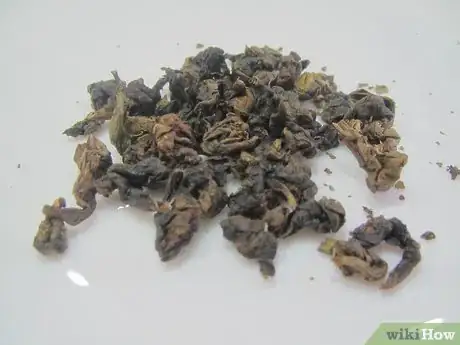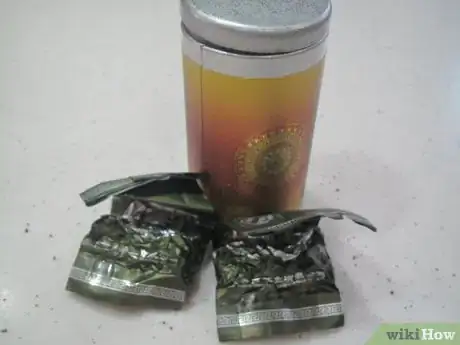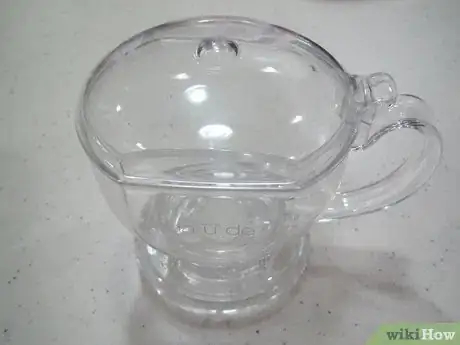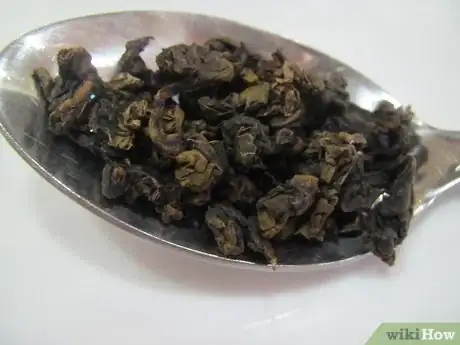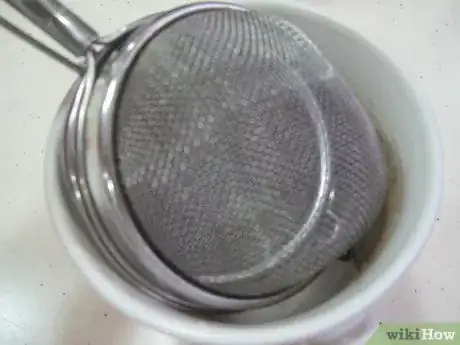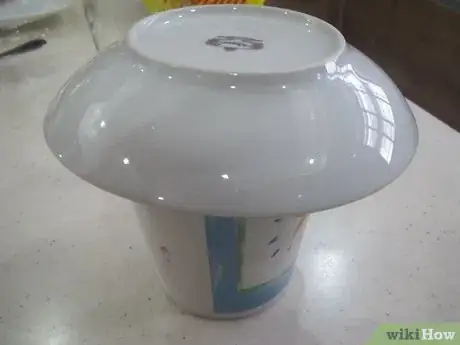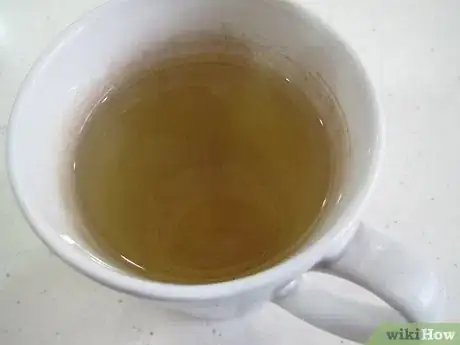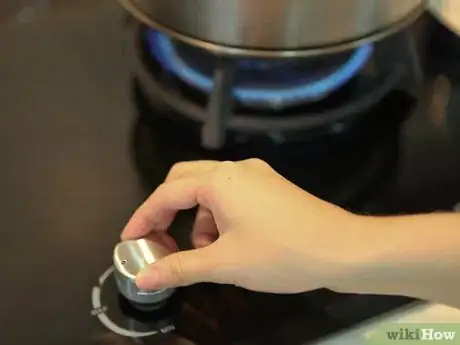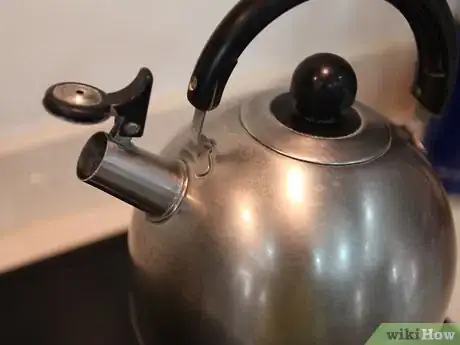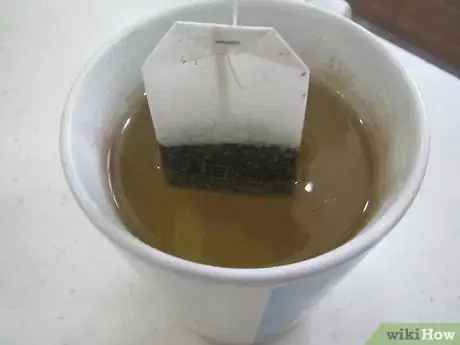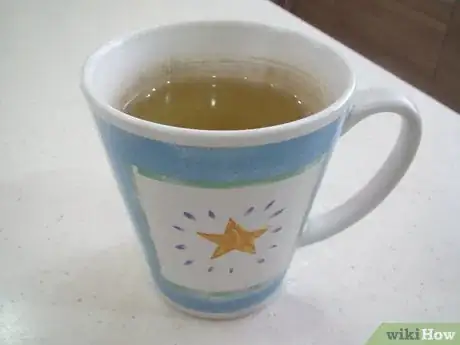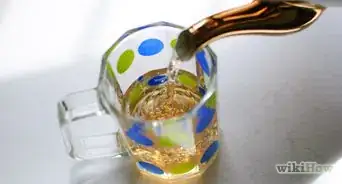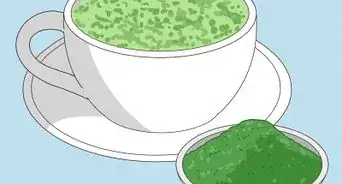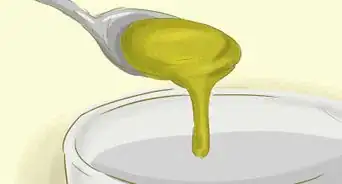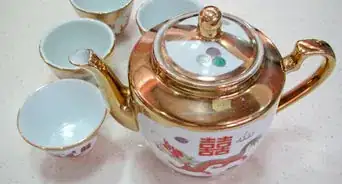wikiHow is a “wiki,” similar to Wikipedia, which means that many of our articles are co-written by multiple authors. To create this article, 25 people, some anonymous, worked to edit and improve it over time.
There are 7 references cited in this article, which can be found at the bottom of the page.
This article has been viewed 328,635 times.
Learn more...
Green tea has served as both a healing tea and a refreshing tea since ancient times. Renowned for numerous health giving properties, it is even considered an important nutritional means for warding off cancer.[1] [2]
Brewing green tea is simple and you don't even need to worry about milk, lemon, or sugar, as green tea is meant to be enjoyed in its original, unadulterated state.[3] The only thing you might wish to account for is how to lessen the amount of caffeine in the pot, something you can learn more about by reading How to Minimize Green Tea Caffeine. In this article, you'll learn about choosing your green tea, and brewing it either with a tea ball, in a teapot, or by teabag.
Steps
Choosing your green tea
-
1Decide which green tea you'd like to drink. This isn't as easy as brewing it because there's a lot of choice! You will also need to decide between loose green tea and green tea teabags; while teabags are more convenient and there's nothing wrong with using them for flavor or strength, the loose tea may feel more authentic for a full experience of enjoying your green tea. Here are some types of green tea to consider:[4]
- Gunpowder – the Chinese also call this "Pearl Tea". The tea resembles tiny gunpowder pellets. When water is added, the little pellets or pearls unfurl. This one stays freshest longest.
- Hyson – This has a very pungent taste, and has thick, yellow-green leaves twisted into thin and long shapes.
- Dragonwell – This variety is very popular in China. It tastes mellow and has a light green flavor. The leaves open to reveal a bud when water is added.
- Agarwood - mild traditional green tea taste. Make sure you use whole leaf tea vs tea made from the wood which is illegal to purchase.
- Pi Lo Chun – In Chinese this name translates to "Green Snail Spring". A rare tea, the little rolled leaves look like snails. Owing to the fact that the tea bushes are grown amid orchards, this tea tends to have the flavors of plums, peaches, and apricots embedded in the leaves.
- Matcha – This is powdered green tea leaves. It appears a bright green when water is added.
- Gu Zhang Mao Jian – This tea only uses the silvery-tipped young leaves picked within a set 10 day period during spring. While darker than other green teas, it has a smooth and sweet taste.
- Sencha – This is a common Japanese green tea. Jewel green matcha is a good choice for those who find other green tea too "grass" tasting.[5]
- Gen Mai Cha (genmaicha) – This is sencha tea leaves mixed with fire-roasted rice. The taste is savory and earthy. Also Japanese in origin.
- Gyokuro – This Japanese green tea has leaves that look like pine needles, with a sweet and smooth taste. The tea looks green.
- Hojicha – A tea with large, unrolled leaves. It tastes nutty.
-
2Store purchased tea in an airtight, dark container to avoid loss of its qualities; the aromatic oils evaporate if not stored this way. Purchase small amounts only, and keep it in a cool spot. Green tea over six months old is no longer fresh.Advertisement
-
3Consider keeping a separate teapot for your green tea. While this isn't necessary, it's a common practice for tea drinkers who regularly enjoy green tea because it prevents cross flavoring from black or herbal teas. If this doesn't bother you (indeed, you might not even notice the difference), just be sure to wash your regular teapot well.
- Green tea should only be brewed in ceramic, clay, china, glass, or stainless steel teapots. Do not use plastic or aluminum teapots.[6]
Brewing loose green tea with a tea ball
-
1Add the loose green tea to a tea ball (a spoonful is adequate). A tea ball can also be dropped into a teapot for one or two if easier. Just be sure that the tea ball has the capacity for the amount of cups you're planning on brewing.
-
2Drop the tea ball into a cup or mug of freshly boiled hot water. The boiled water should be "first boil" (see the boiling instructions under "Brewing loose green tea in a teapot" for more details). The water should be allowed to sit for a moment as the ideal temperature for water for green tea is 180 °F (82 °C), 80C.
-
3Put a lid or plate over the cup or mug (unless you're already using a tea ball container equipped with a lid, also known as an "infuser basket"). Leave the tea to steep for a few minutes (3 to 5 minutes is usually enough, unless the tea instructions advise otherwise).
-
4Remove the tea ball.
-
5Serve. Enjoy it with some matcha and chocolate swirl cake.
Brewing loose green tea in a teapot or kettle
-
1Preheat the teapot or kettle. Empty the heating water just before adding the brewing water.
-
2Boil the water to "first boil". This is when the water begins to boil but has not yet begun to simmer. The temperature at this stage will be 160ºF (71ºC). Bitter brews come from too high a temperature of water on green tea; prefer a longer steeping time at a cooler temperature instead.
-
3Place one rounded teaspoon of loose green tea or one teabag per cup into the teapot.
-
4Pour over the boiling water. Let it steep for three to five minutes. Three minutes steeping results in light flavor, while five minutes will give you a robust, full flavor. The longer the green tea is left in, the stronger the taste, so you might like to experiment as to which taste works best for you.
- For high grade tea such as "gunpowder" types, steeping time may be as few as 10 seconds on first brew. You can reuse the leaves several times, steeping slightly longer with each batch. It is advisable to allow the leaves to rest for a few minutes after the first two brews so as not to burn or overwork them.
- Always time the brewing and taste the tea rather than relying on color changes. Some green teas turn dark quickly but are not ready, while some stay light but are ready sooner than you may think.
-
5Pour into a sieve (to catch any loose tea, if you don't want it in your drink) over cups, mugs, or glasses. It is now ready to be enjoyed.
- In addition, Chinese green tea connoisseurs will also use a snifter cup to enhance the tea drinking experience. These cups are much smaller in diameter but longer in length to allow the scent to waft into the nostrils as you sip out of your main cup.
Brewing green tea teabags
-
1Take out the green tea teabag.
-
2Boil water and pour water into a mug. Or you can just microwave a cup of water. The boiled water should be "first boil" (see the boiling instructions under "Brewing loose green tea in a teapot" for more details).
-
3Add the green tea bag to the cup of boiling water.
-
4Allow the tea bag to steep in the hot water for 3-5 minutes.
-
5Remove the teabag. Or, if preferred, you can leave the tea bag in the mug or you can remove the tea bag before enjoying your drink. It's your choice.
-
6Serve. Green tea is not usually sweetened, but if you wish to, then add sugar or honey to suit your taste. Now you're ready to enjoy green tea.
Community Q&A
-
QuestionCan I reuse a green tea bag to make more tea later?
 Community AnswerYou can, but the longer you had it in your first cup, the more watery the next one will be. Therefore the flavor will not be as good, nor will it be as strong. This is ill advised.
Community AnswerYou can, but the longer you had it in your first cup, the more watery the next one will be. Therefore the flavor will not be as good, nor will it be as strong. This is ill advised. -
QuestionCan I boil water & the leaves simultaneously or do I need to pour water over it afterwards?
 Community AnswerActually, it doesn't matter, but most people would pour water over it because if you leave it to long in the boiling water, the tea bag will explode.
Community AnswerActually, it doesn't matter, but most people would pour water over it because if you leave it to long in the boiling water, the tea bag will explode. -
QuestionDoes adding ice to green tea make it lose any benefits it would've had when hot?
 Community AnswerNo. Adding ice will potentially water your drink down and dilute it, but it is still the same drink with all the same benefits.
Community AnswerNo. Adding ice will potentially water your drink down and dilute it, but it is still the same drink with all the same benefits.
Warnings
- Avoid using a perforated spoon; the handle prevents proper steeping and prevents the flavor from being properly infused.⧼thumbs_response⧽
- Green tea and milk is a recent innovation, probably resulting from the enjoyment of chai lattes and the use of powdered matcha tea. Although many new tea drinkers may enjoy it this way, it's not a traditional way to drink green tea. If it's your thing, then by all means do it, but for everyone else, remember not to add milk!⧼thumbs_response⧽
Things You'll Need
- Teapot
- Tea strainer
References
- ↑ Selene Yeager, The Doctors Book of Food Remedies, p. 620, (2007), ISBN 1-59486-753-4
- ↑ Lester A Mitscher, PhD and Victoria Dolby, The Green Tea Book, (1998), ISBN 0-89529-807-4
- ↑ Lester A Mitscher, PhD and Victoria Dolby, The Green Tea Book, p.145, (1998), ISBN 0-89529-807-4
- ↑ Lester A Mitscher, PhD and Victoria Dolby, The Green Tea Book, pp. 142–145, (1998), ISBN 0-89529-807-4
- ↑ Selene Yeager, The Doctors Book of Food Remedies, p. 620, (2007), ISBN 1-59486-753-4
- ↑ Lester A Mitscher, PhD and Victoria Dolby, The Green Tea Book, p.148, (1998), ISBN 0-89529-807-4
- ↑ Selene Yeager, The Doctors Book of Food Remedies, p. 620, (2007), ISBN 1-59486-753-4
- Lester A Mitscher, PhD and Victoria Dolby, The Green Tea Book, (1998), ISBN 0-89529-807-4 – research source
About This Article
To brew green tea leaves, add 1 tablespoon of loose leaves or 1 bag of leaves to a cup filled with freshly boiled hot water. Then, cover the cup with a bowl or plate and let the tea steep for 3-5 minutes. After the tea has steeped, remove the leaves and enjoy! For tips on how to brew green tea from teabags, read on!
